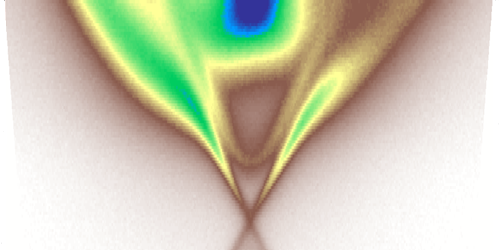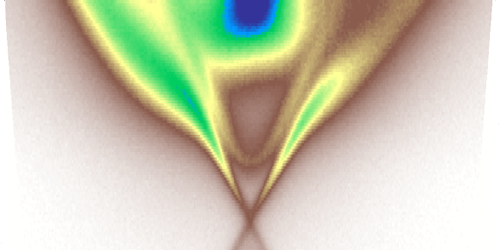Skimming the Surface of Magnetic Topological Insulators
Combining topology and magnetism promises a wealth of new phenomena, such as the quantum anomalous Hall effect and axion electrodynamics (see 24 November 2008 Viewpoint). Some of these “goodies” have been observed but only at impractically cold temperatures. Recent efforts have turned toward intrinsically magnetic topological insulators, like , which have the potential to exhibit exotic effects at room temperature. However, three new papers have analyzed the surface states of and found that they lack a feature needed for novel topological behavior: a magnetically induced gap between electronic energy bands. The results suggest that more work is needed to get the right combination of magnetism and topology.
Gapped surface states are a prerequisite for realizing several desired topological states like the quantum anomalous Hall insulator, which exhibits dissipationless conduction, and the axion insulator, which presents exotic polarization and magnetization responses. Previous work on suggested that its magnetic ordering was ideal for hosting gapped surface states, but the experimental evidence has been ambiguous.
Three separate teams from China performed angle-resolved photoemission spectroscopy measurements on using low-energy photons, which are well-suited for probing this material’s band structure. Yu-Jie Hao from the Southern University of Science and Technology and colleagues found that ’s surface is characterized by a gapless rather than a gapped state. Similar results were obtained by Yujie Chen from Tsinghua University and collaborators, who also explored how the surface states responded to temperature changes. A third group, consisting of Hang Li from the Chinese Academy of Sciences and collaborators, identified gapless surface states in and two other magnetic topological insulators: and .
Why weren’t the surface states gapped as expected? The researchers argue that it’s because the ideal magnetic ordering becomes disrupted on the surface. Future work will explore whether that ordering can be controlled by using thin films of or other magnetic topological insulators.
This research is published in Physical Review X.
–Michael Schirber
Michael Schirber is a Corresponding Editor for Physics based in Lyon, France.





